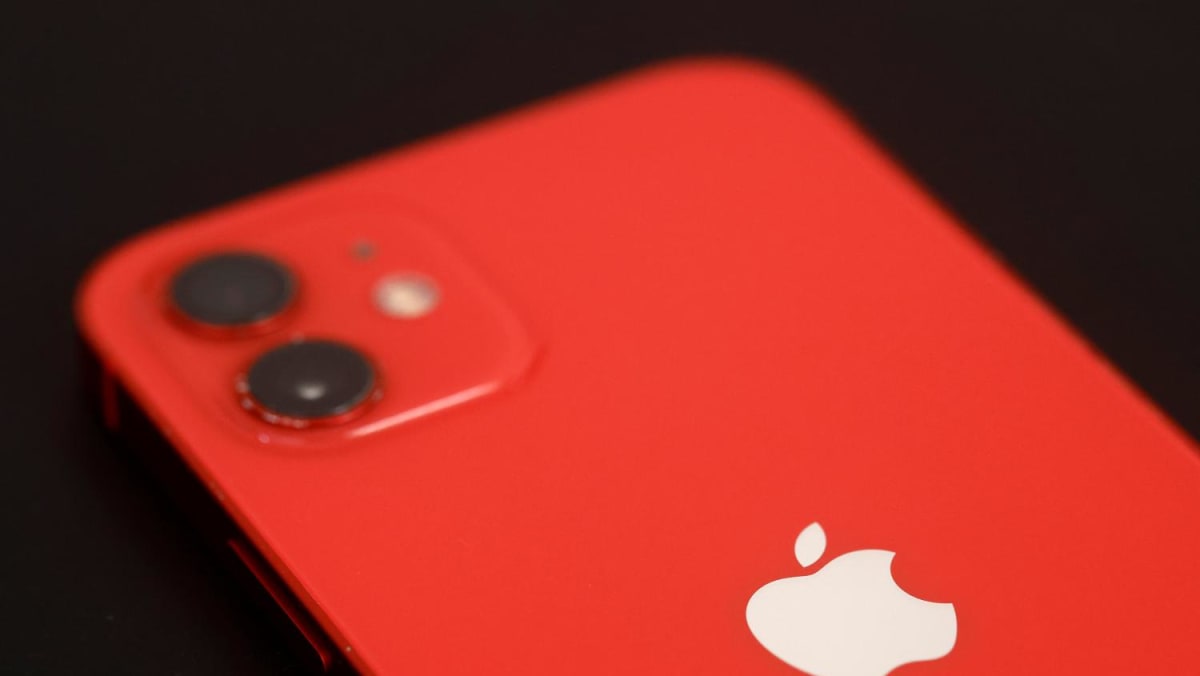
SINGAPORE — The Singapore authorities are monitoring Apple’s iPhone 12 after a dispute between French regulators and the technology firm over the phone’s radiation levels.
Responding to queries from TODAY on Friday (Sept 22), the National Environment Agency (NEA) and the Infocomm Media Development Authority (IMDA) said in a joint statement that any radiofrequency-emitting equipment must meet “strict safety requirements” before it is approved in Singapore.
The authorities added that they are aware of the findings of the French regulator, Agence Nationale des Frequences (ANFR), on the radiofrequency emissions from iPhone 12 models sold in the country.
News agency Reuters reported ANFR as saying on Sept 12 that the iPhone 12’s specific absorption rate (SAR) — a measure of the rate of radiofrequency energy absorbed by the body from a piece of equipment — was higher than legally allowed, which prompted a sale suspension in France.
Apple has contested the findings, saying that the iPhone 12 — which was first released in 2020 — is compliant with global standards.
On Friday, IMDA said that it is in touch with Apple Singapore and understands from Apple that its iPhone 12 is “certified by multiple international bodies” and is also recognised as “compliant with all applicable SAR regulations and standards globally”.
NEA’s website states that Singapore adopts guidelines from the International Commission on Non-Ionising Radiation Protection (ICNIRP), an independent international organisation recognised by the World Health Organization (WHO).
Radiofrequency radiation reference levels for mobile phones range between 4.5 watts and 10 watts per square metre, the website states.
NEA and IMDA added on Friday that all models of mobile phones will need to “declare their conformance to Singapore telecommunication standards, which includes SAR limits”.
Vendors must submit test reports done by accredited, certified test laboratories as proof of conformity, and if any parameter is found to be above limits, the mobile phone is considered non-compliant with IMDA technical standards, the agencies said.
They added that equipment registration “obtained with false or misleading information will be voided”.
“Apple had submitted to IMDA the radiofrequency test report for its iPhone 12 model showing that it complied with prevailing international standards,” the agencies said.
These standards include the European Union (EU) standards for radiofrequency emission when the model was first registered and later approved for sale in Singapore.
“NEA and IMDA would like to assure the public that strict safety requirements are in place prior to the approving of any radiofrequency-emitting equipment in Singapore.
“We will monitor any further developments in this case.”
HOW HAVE FRANCE AND APPLE REACTED?
Reuters reported that EU standards for SAR are capped at 4 watts per kilogramme (Wkg), but tests done by the French regulator found that the iPhone 12 had a SAR of 5.74Wkg when held in the hand or kept in a trouser pocket, which is higher than what is legally allowed.
The regulator has said that a software update would suffice to fix the issue because the software such as applications and programmes running on a device can affect how the device operates.
Despite this, Apple rejected the findings, stating that it had provided the regulator with multiple of the company’s own and independent third-party lab results to prove its compliance with all SAR standards in the world.
The company added that it would contest the regulator’s review and would continue working with the agency to show that the iPhone 12 is compliant with safety standards.
However, on Sept 15, it said that it would issue a software update to accommodate the testing methods used in France, Reuters reported.
DO RADIOFREQUENCY EMISSIONS CAUSE CANCER?
While the iPhone 12’s SAR has reportedly exceeded the legal limit for radiofrequency emissions, users should not be too alarmed as its current radiation levels are too low to pose a cancer risk to human health, the ICNIRP in a Reuters report.
Although radiofrequency radiation does generate heat, it does not produce enough energy to break chemical bonds in human cells, WHO said in 2014.
In addition, WHO and other international health bodies said in a report back in 2007 that there is no definitive scientific evidence that exposure to very low levels of radiofrequency radiation can cause other adverse health effects.
Checks done online by TODAY found that the iPhone 12 is still being sold in Singapore as of Friday.
TODAY has reached out to NEA and IMDA to clarify if the authorities will conduct their own tests on the phone’s radiation emission levels.